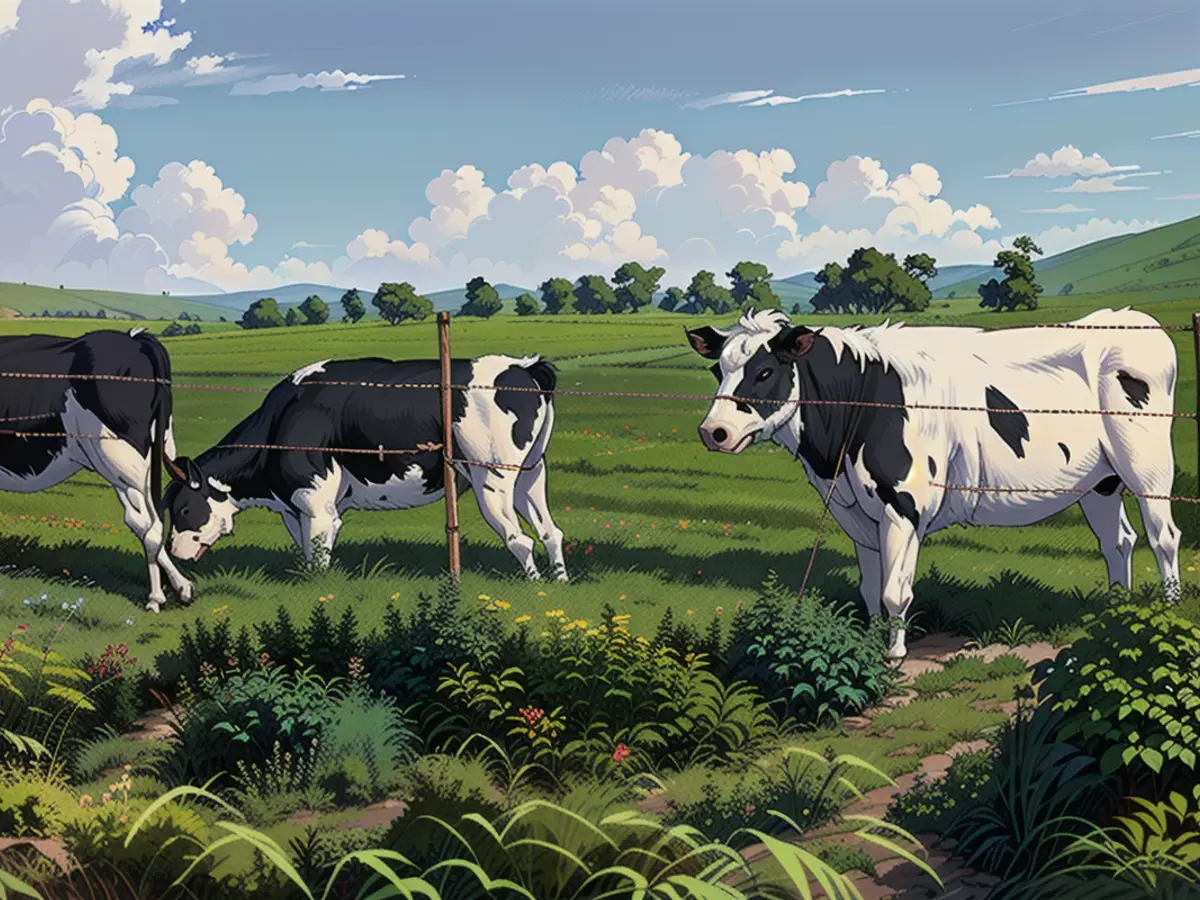The US government introduces new financial rewards for dairy farms in an attempt to curb the spread of bird flu.
In a recent announcement from the US Department of Health and Human Services and the US Department of Agriculture, the government plans to pay up to $28,000 per farm to take specific measures to prevent the spread of bird flu in dairy cattle. $98 million will be given to the USDA's Animal and Plant Health Inspection Service to fund the program.
The USDA confirmed the first bird flu infection in cows in late March, quickly followed by over 40 herds testing positive in nine states. While the current risk to humans is considered low since the virus doesn't transmit easily from person to person, the close proximity of humans to infected cattle is deemed risky as it could cause the virus to morphe into a human pathogen, potentially sparking another pandemic.
The USDA stressed that the main focus is on containing this as an animal health event and eventually eliminating the virus from the industry. They aim to develop a vaccine to prevent future H5N1 bird flu outbreaks in cattle.
Some dairy farmers have been reluctant to let government officials onto their farms, and farm workers with symptoms haven't been eager to be tested due to the lack of compensation if they need to take time off from work.
Under the new plan, USDA will provide financial support of up to $2,000 per month to producers who take measures to protect their workers, like providing personal protective equipment or helping with cleaning their uniforms. Additionally, farmers who allow workers to participate in a study through the USDA and the US Centers for Disease Control and Prevention will also receive aid. The participating workers would get $75 for performing interviews and providing a nasal swab and blood sample, although they're not required to do all three.
Farm worker advocates are skeptical that the $75 payment would encourage more testing, considering the potential time off work and the minimal income it provides.
An estimated 150,000 to 200,000 dairy workers in the US might be impacted by this incident, so Strater argues that substantial resources should be invested into protecting these at-risk individuals. Financial incentives are mainly allocated towards cattle owners rather than the workers close to them.
Elizabeth Strater, director of strategic campaigns for United Farm Workers, confirms that workers are reluctant to be tested due to the fear of losing their jobs.
Dr. Nirav Shah, principal deputy director of the CDC, states that workers would receive $75 for participating in an interview and providing necessary samples, but they don't need to undergo all three procedures.
Advocates express their concern that the $75 payment isn't enticing for workers to come forward for testing, as it may not cover their lost income and living expenses.
Bethany Alcauter, director of research and public health programs for the National Center for Farmworker Health, acknowledges that finding out about human cases of H5N1 is a passive process and needs improvement.
The USDA also intends to provide financial assistance to help dairy farms create biosecurity plans. For instance, they will pay $100 for farms to purchase an in-line sampler to test their milk. Another $1,500 is available for farms to heat treat their wasted milk prior to disposal. Other aid includes covering veterinary costs for infected farms and paying for shipping samples to testing labs in the National Animal Health Laboratory Network.
The USDA will also compensate farmers for any lost milk production due to sick cows.
The National Milk Producers Federation stated they were satisfied with the announcement of additional financial help to dairy farmers.
Apart from that, HHS plans to provide an extra $101 million in financial aid to the CDC and the US Food and Drug Administration to enhance their efforts against H5N1.
According to HHS Secretary Xavier Becerra, these funds will be utilized by the CDC to widen the surveillance of individuals who have been in contact with infected animals, to amplify their laboratory capacities, to assess the efficiency of potential vaccines, and to produce, store, and distribute more influenza diagnostic kits. Moreover, the FDA will receive $8 million to improve their supervision at various stages of the milk production process.
Read also:
- No food or coffee for three days, just juice, juice, juice instead: a field report
- How to get rid of the flu if you have caught it
- Doctors warn of penis fractures and other injuries during the Christmas season
- Corona or flu epidemic? These pathogens are making us cough and sniffle right now
Dairy farmers who allow workers to participate in the study conducted by the USDA and the US Centers for Disease Control and Prevention will receive additional aid alongside the $75 payment for participating. Farm worker advocates argue that the $75 payment may not be enough to encourage workers to undergo testing due to potential lost income and living expenses.
Source: edition.cnn.com








